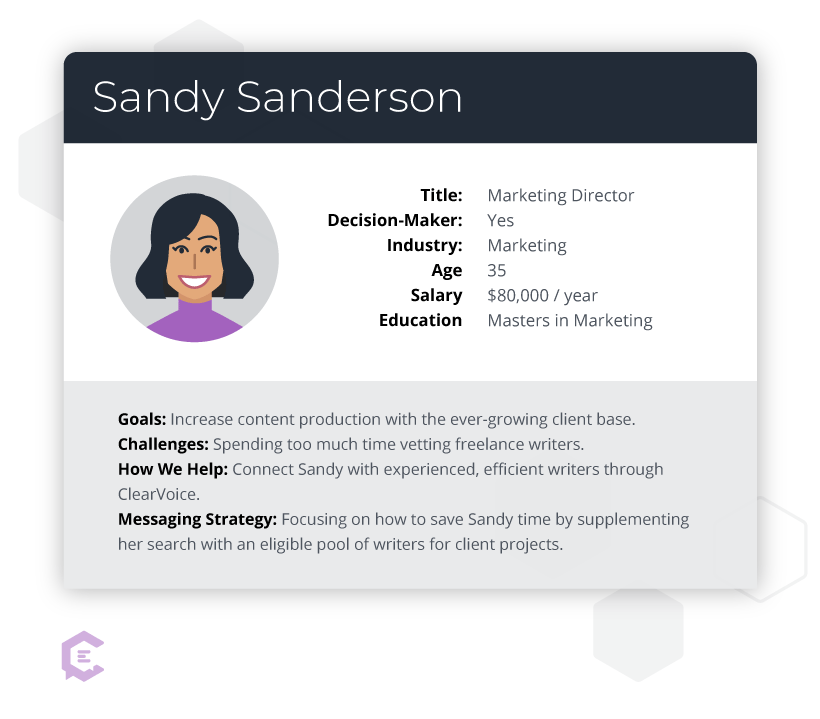Every year the widely celebrated “documented content strategy” stat orbits the marketing atmosphere. As soon as the latest research is published, this stat is splashed across blogs and social media channels, sourced dutifully throughout ebooks and infographics.
The theory? If you have a documented content strategy, the world is your oyster. If you don’t have one… well… you’re in for a world of hurt.
Simply “having a documented content strategy” does not guarantee marketing greatness. What matters is what you do with that strategy — and how you stay committed to it with the content you produce. Today your buyer personas are gathering dust in some buried document somewhere. So, what’s next?
Character-driven stories rooted in buyer personas
Storytelling in fiction falls into two main categories, plot-driven and character-driven. Check out the definitions from Writer’s Edit to understand the nuances of each.
Plot-driven story: “A complete journey where there is a clear end goal which has already been decided. The characters are there to help move the plot from A to B — and if you replaced them with other people, the plot basically stays the same.”
Character-driven story: “An internal story, where we spend time reflecting with the characters and discover who they are as people. The nature of the characters and the decisions they make shape the plot and the final outcome of the story.”
Which story is your content telling? Plot-driven content means your organization’s motives are steering the buyer toward the final outcome. Character-driven content means the buyer’s motives are guiding them toward the outcome. If you’re ready to tell character-driven stories, start building buyer personas into your content strategy with militant consistency.
Reference buyer personas to develop useful website content
Maybe your website isn’t converting or it’s outdated — or you’re dealing with all of the above. Updating sections and pages are like slapping content bandages all over the place. Eventually, you’ll decide that it’s time for a complete website rebrand.
Websites are complex… as such, they tend to be pricey endeavors. A simple website redesign from an agency will cost around $20K and a bigger website moves north of that to about $40K, according to IMPACT. When investing tons of time, budget, and resources into your website, you want to make damn sure your content strategy is strong before you write your first H1.
Typically for organizations, the branding is all there. But guess who isn’t sitting at the adult table where all of the messaging decisions are being made? Buyer personas. Now is the time to dust off your document and refresh your personas as necessary.
In the ClearVoice B2B buyer personas template, there is a “how we help” section. This personas document is an ideal reference point when creating website content with a character-driven approach. As you journey through a persona exercise, you address the buyer’s goals and challenges with your solutions. Done right, you can pluck sentences right from this document and add them to your website content.
When a potential buyer visits your website, they want to know if you’re the best choice. They have obstacles and opportunities… Will your service or solution help them? That is what they care about. Referencing buyer personas at the beginning of a website project makes content creation easier, resulting in powerful and personalized messaging.
Keep your buyer persona muse visible in blog creation
If your blog posts are missing a pulse, they are probably lacking character. Character is found within your buyer personas — as long as your persona characters have depth. That all depends on how your personas were developed. At the very least, your buyer persona exercise should involve three steps.
- An internal session – Use the collective knowledge of team members across departments to diversify the information you gather.
- An internal survey – What your team thinks isn’t always what your clients think. Conduct a brief internal survey and include questions related to your solution.
- An external survey – What your team thinks isn’t always what your future clients think. Conduct a brief external survey and include questions related to the category of your solution (i.e., employee engagement software).
You have endless avenues for collecting data about your prospects and clients, including the wondrous Google Analytics or your preferred SEO keyword platform. These research tools are critical for your content, revealing a buyer’s actions and behaviors. Buyer personas go deeper into what drives them forward and what keeps them up at night.
The intel you receive from online surveys is unbeatable, because you gain research-backed personas — and bonus — original research to enrich your blog content. A single survey for your different personas has the potential to populate 6-12 months of blog content on your editorial calendar.
For example, let’s say you ask each of your personas what their primary goals are. You can break out the top five goals into separate blogs, then package the same data up into other visual content assets — like a comprehensive ebook or infographic. If you have five personas, that’s 25 blogs and 10 assets from one survey question… BOOM.
A buyer persona is your content muse. Keep your muse visible, at the top of your blog draft document and next to each topic on your editorial calendar. Ingraining personas into your content plan helps you stay focused on developing content that meets their needs.
Consider buyer personas for relevant video content
The most expensive piece of content you will ever produce is video. Several marketers have confessed to their video spend to me… $10K on a single video is common. Yeah…
Similar to website rebrands, content marketers have a bad habit of chucking content foundations when they finally win the budget. Video content is shiny, but it’s also crazy expensive. To make your spend count, personalization is critical.
Personalized video marketing experiences are rooted in buyer personas. Episodic video content is a Netflix-adjacent method for hooking an audience through a relatable theme that keeps viewers coming back for more. Before you go all in to produce a complete series, make sure your “muse” is fully present for inspiration.
Let’s say your organization is focusing on the financial services industry as a new vertical. Do you have existing clients who work at financial services companies? Create a video series around their goals and challenges… and how your solution has helped them. Essentially, you are taking your buyer persona template and spinning that into personalized video content.
Buyer personas should be considered with every production detail. Background music is a prime example. How do you decide whether folk music or instrumental hip-hop is best? It’s not just about choosing music that conveys the vibe of your brand, it’s about choosing music that jives with your buyer
“No two content marketing strategies are the same. Or, should be the same. Your business needs will differ from others. Your customers’ needs will differ from others. These needs will influence your customers’ journey, which will in turn influence what actions you want your audience to take once they’ve consumed your content.” – Michael Brenner
Documenting buyer personas within your content strategy is a foundational step in speaking the language of your audience. If your buyer personas are just sitting around eating bonbons all day, it’s time to get them off the sofa. Your buyer persona muse should inform every piece of content, regardless of the project undertaking or the word count.
By infusing your audience’s specific goals and challenges into your content from the start, you aren’t just producing another piece of content… You’re telling a character-driven marketing story.






